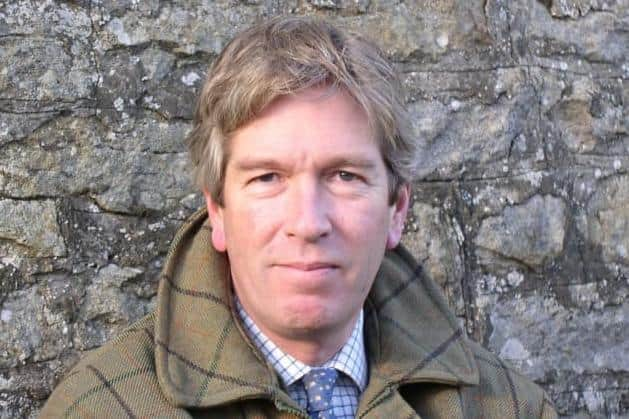Why burning peatland is an important part of moorland management - Adrian Blackmore
Some landowners have long opted to use fire as a method to maintain healthy growth, while others have taken to mowing, or leaving the vegetation unmanaged.
Researchers at the University of York are undertaking a 20-year study to compare the impacts of these three management options in relation to mitigating climate change, increasing water storage and quality and increasing biodiversity. Their findings after 10 years of that study are significant.
Advertisement
Hide AdAdvertisement
Hide AdHeather peatland gathers and stores atmospheric carbon, retains water, provides much of our drinking water, can reduce flooding, and provides a habitat for many different species of wildlife.


Reporting at the halfway mark of the study, the researchers have found that heather burning, as well as mowing, and leaving the vegetation unmanaged, should all be available management tools, there being no ‘one size fits all’ approach that land managers should use.
The study showed that, when compared with unmanaged plots, the burning and mowing of heather supported an increased diversity of vegetation, with higher levels of sphagnum moss that is especially supportive of peat formation. The study also predicted a greater number of some ground-nesting birds, many of which are red listed as being of conservation concern, as taller unmanaged heather limits appropriate nesting sites. Burning was also found to be particularly good both for carbon uptake, and nutrient content for grazing animals.
Concerns around burning are often focused around the emissions from the fire, but whilst carbon loss from burnt areas was higher than from mowing in the short term, it fell as the vegetation regrew, and took up a lot more carbon in the long term. Over 10 years, burnt plots absorbed more than twice the carbon when compared with mown areas.
Advertisement
Hide AdAdvertisement
Hide AdLooking at the increased threat of wildfires in the UK, the study found that whilst there were some initial benefits to allowing heather to grow unmanaged, it becomes less efficient at taking up carbon as it aged. Unmanaged plots were also found to have a lower water table than those managed either by burning or mowing, which could prove relevant to ongoing carbon storage projects, which employ significant resources to raise water tables on moorland areas in order to capture and retain more carbon.
Unmanaged areas were also found to be drier, allowing microbes to decompose the peat, which can be a very real fire risk due to our warmer and drier summers as a result of climate change. The damage caused by wildfires can be catastrophic because, unlike the controlled cool burns that are carried out by grouse moor managers, they result in huge carbon losses due to the fire burning into the underlying peat.
Although there are a further 10 years of this 20-year research project still to be undertaken, the interim findings are extremely important both for policy makers, and those responsible for managing our heather moorlands, as some of the answers as to how heather burning compares with mowing, or leaving the vegetation uncut, are finally being provided. No two moors are the same, and given the right conditions and circumstances, burning, cutting, and leaving heather unmanaged should all be available management tools, depending on which is most appropriate for a particular piece of ground and its aspects.
Sadly, the RSPB has to date chosen to ignore available scientific research and evidence, and taken every possible opportunity to call on the government to ban all burning on peatland. Recently, this was on the back of a fundamentally flawed ‘investigation’ which saw the RSPB encouraging members of the public to use its new app to report burning on peatlands, which resulted in claims that burning was still taking place illegally and on a large scale, contrary to Defra’s Heather and Grass Burning (England) Regulations. Reports of 1,584 alleged breaches were passed to Natural England and Defra as formal complaints.
Advertisement
Hide AdAdvertisement
Hide AdHowever, following a parliamentary question from Sir Robert Goodwill, MP for Scarborough and Whitby, and Chair of the Environment, Food and Rural Affairs Committee, it was revealed that just one of those 1,584 cases had been found to be in breach of the regulations.
It is hoped that the RSPB will take note of the interim findings from this study, as to do otherwise would be irresponsible. They need to consider more than just their dislike of grouse shooting and focus instead on how we might best: mitigate climate change and reduce the risk of wildfires; increase both water storage and quality; and increase biodiversity.
Adrian Blackmore is director of the Campaign for Shooting at the Countryside Alliance.